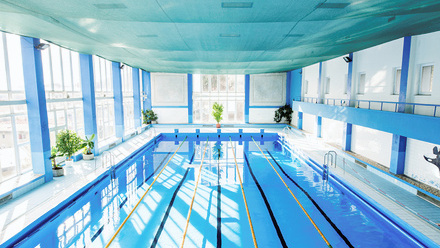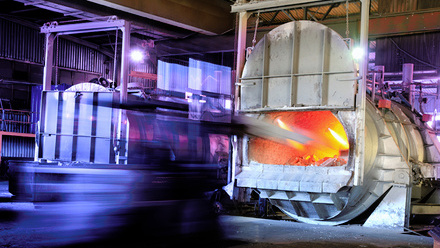Potential antimatter studies exploring atomic nucleus
Experiments at CERN’s Antimatter Factory are set to pave the way for gamma-ray lasers to look inside the atomic nucleus.

The set-up used by the AEgIS team to laser-cool positronium.
© CERNAEgIS’s experiment at CERN’s Antimatter Factory, producing and studying antihydrogen atoms, has achieved the goal of cooling a sample of positronium (an electron orbiting a positron) enough to measure it with high precision. This research would have applications beyond physics.
To create antihydrogen (a positron orbiting an antiproton), AEgIS directs a beam of positronium into a cloud of antiprotons produced and slowed down in the Antimatter Factory.
When an antiproton and a positronium meet in the antiproton cloud, the positronium gives up its positron to the antiproton, forming antihydrogen.
Producing antihydrogen in this way means that AEgIS can also study positronium, itself an antimatter system.
Positronium has a very short lifetime, annihilating into gamma rays in 142 billionths of a second.
However, because it comprises just two point-like particles, the electron and its antimatter counterpart, 'it’s a perfect system to do experiments with', says AEgIS spokesperson Ruggero Caravita, 'provided that, among other experimental challenges, a sample of positronium can be cooled enough to measure it with high precision'.
This laser cooling has achieved more than halve the temperature of the sample, from 380 to 170K.
The team aims to break the barrier of 10K in future experiments.
New possibilities for antimatter research include:
- High-precision measurements of the properties and gravitational behaviour of this matter–antimatter system, which could reveal new physics
- It also allows the production of a positronium Bose–Einstein condensate, in which all constituents occupy the same quantum state. Such a condensate has been proposed as a candidate to produce coherent gamma-ray light via the matter-antimatter annihilation of its constituents – laser-like light made up of monochromatic waves that have a constant phase difference between them.
'A Bose-Einstein condensate of antimatter would be an incredible tool for both fundamental and applied research, especially if it allowed the production of coherent gamma-ray light with which researchers could peer into the atomic nucleus.' says Caravita.
The AEgIS collaboration shares its achievement of positronium laser cooling with an independent team, which used a different technique and posted their result on the arXiv preprint server on the same day as AEgIS.







